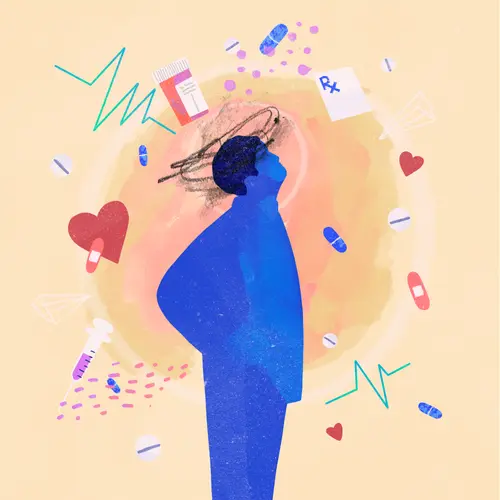The link between cancer and a type of blood clot called deep vein thrombosis (DVT) is a two-way street. If you have cancer, you have a bigger chance of getting DVT. And if you had DVT, your odds go up of getting diagnosed with cancer.
Why Blood Clotting Matters
It's probably something you don't think about every day, but your blood's ability to clot is important. If it didn't, every scrape and cut you got would never stop bleeding. But trouble starts when clots develop where you don't want them.
That's what a DVT is: a clot deep in your veins, usually in your legs. DVT can make the area nearby painful, warm, and swollen. But the real risk is if the clot breaks off into your bloodstream and travels to a different part of your body. If it moves to your lungs, it can cause a pulmonary embolism, and it’s a life-threatening emergency.
Most of the time, your body does a good job of balancing when blood should clot and when it shouldn't. But cancer -- and its treatment -- can mess up that balance.
Cancer Can Cause Blood Clots
Cancer cells damage tissue in your body, which leads to swelling and triggers clotting. Tumors also churn out chemicals that cause clots.
Some types of cancer are more likely to cause DVT than others, such as cancers of the:
The risk of DVT is also higher with leukemia and lymphoma, and with cancer that has spread through your body (metastatic cancer).
Because of the link between the conditions, it's possible that a clot can be an early sign of cancer. Some experts say that about 1 out of 10 people who have a DVT get diagnosed with cancer within the year. But other research shows the risk may actually be much lower.
Cancer Treatment Can Cause Blood Clots
Chemotherapy is often a lifesaving part of cancer treatment. But some chemo drugs raise the chances you'll get blood clots. These medicines may damage blood vessels or lower the level of special proteins in blood that stop clotting. Some examples are:
- Darbepoetin (Aranesp)
- Epoetin (Epogen, Procrit)
- Lenalidomide (Revlimid)
- Tamoxifen (Nolvadex, Soltamax), a hormone commonly used for breast cancer treatment
- Thalidomide (Synovir, Thalomid)
There are other reasons your cancer treatment can raise your odds of getting DVT. For instance, your risk goes up if you:
- Had cancer surgery, especially around your belly or hips
- Lie in bed while you recover and don't move around much
- Frequently, while in the hospital, get a central venous catheter in your arm or chest -- a tube used to give medicines
If the idea that treatment could cause a DVT worries you, keep in mind that your doctor will carefully weigh the pros and cons before they suggest you get chemo.
If You Have Cancer: Blood Clot Prevention and Treatment
Talk to your doctor about your risk of DVT and how to lower it. The best approach depends on things like the type of cancer you have, the treatment you need, and whether you're in the hospital or at home.
- If your risk is high, your doctor may recommend that you:
- Take medications called anticoagulants or blood thinners
- Get moving as soon as possible after surgery
- Wear special tight socks called compression stockings that improve blood flow
- Use a cuff that automatically squeezes your legs to keep blood moving -- a device called an intermittent pneumatic compression
If you do get DVT, your doctor will act quickly. You'll probably get treatment with a blood thinner. You may need to use this medicine for many months or until after the cancer is gone.
If You Had a Blood Clot and Don't Have Cancer
Just to be safe, your doctor may want to give you a checkup and run some tests. They'll ask about any possible signs of cancer, like losing weight when you weren't trying to.
Both cancer and a previous DVT raise your chances of having a DVT in the future. Talk to your doctor about whether you'll need regular treatment to prevent it. To lower your risk, you can:
- Take breaks to move around and stretch, so you're never in the same position for too long.
- Get regular exercise.
- Stay at a healthy weight.
- If you smoke, quit.
If you notice signs of DVT like pain or swelling in your leg, call your doctor right away. And if you have symptoms of a blood clot in your lungs -- like struggling to breathe, sharp chest pain, or coughing -- call 911.
